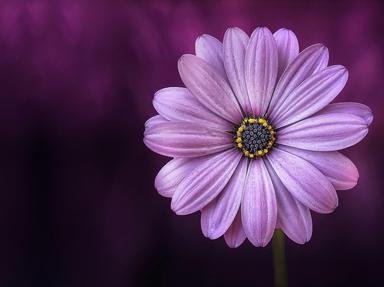Quiz Answer Key and Fun Facts
1. What a lovely host of flowers. This beauty, when sent to anyone, says "You're the only one, and the sun is always shining when I'm with you". What is its name?
2. Gulp! If anyone sends you a bunch of these, it means beware. What is this dainty plant with such a threatening message?
3. The deep red colour of this beautiful flower represents not only true love, but also the blood and wounds of Christ. We couldn't have a quiz on flowers without covering such glory. What is its name?
4. This white flower, when it speaks, says that "You are adorable". What is this lady's name?
5. Here is another lovely flower. It goes perfectly with a white sport coat too. What is its name?
6. One of the messages of this flower, which is so hard to spell, is "You're a wonderful friend". What is its name?
7. This beautiful fern's message tells of the secret bond of love. What is its dainty name?
8. If you receive a small bouquet of these flowers, you are being given the messages of innocence, eternal love and, hopefully, marriage and fruitfulness. Often associated with weddings, what is this sweet flower's name?
9. This fragile little flowers speaks of modesty. What is its name?
10. This alphabetically last flower has at least twenty different species. It's message is one of lasting affection. Do you know what it is called?
Source: Author
Creedy
This quiz was reviewed by FunTrivia editor
WesleyCrusher before going online.
Any errors found in FunTrivia content are routinely corrected through our feedback system.

